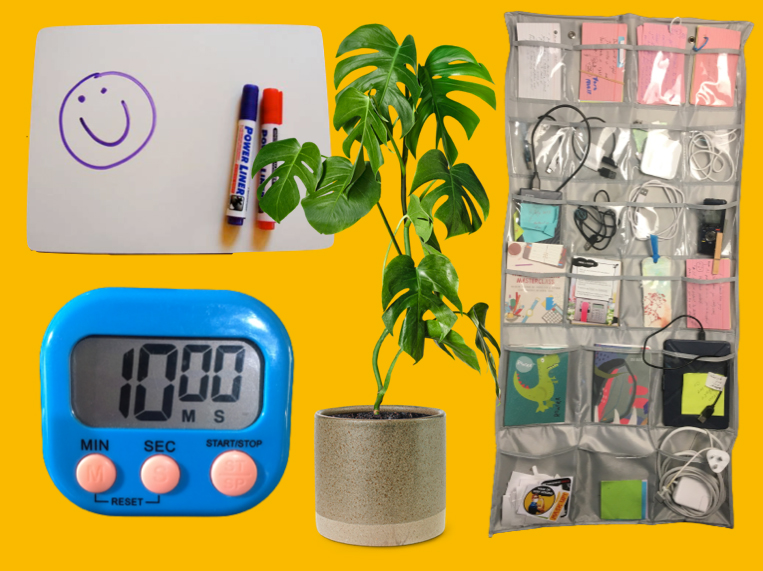
How can you improve the way you study?
You need to start by doing something different.
As Paul Taylor says in his book Death by Comfort:
“Nothing changes if nothing changes”.
Over the years, I’ve read a lot of books and articles on the psychology of behaviour change. One thing is clear from the research literature: it’s much easier to change your behaviour by changing your context rather than changing your thoughts and attitudes.
In other words, the simplest ways you can create change is to set up your environment to make it easier to do the things you want to do and harder to do the things you don’t want to do.
In this blog, I explore different ways you can tweak your study space to make it easier for you to study and harder for you to get distracted.
Here are 20 simple and easy tweaks you can make . . .
1. Have an electronic timer on your desk
Timers are super handy tools, especially when you’re lacking motivation.
Whenever I’m avoiding a task or not feeling in the mood to do something, I’ll say to myself “Let’s just do 10 minutes”. I start the timer and off I go. Usually by the 10 minute mark, the motivation has kicked in and I want to keep going.
Using a timer is a simple and easy way to push through mental blockages. It can also create a sense of time awareness and prompt you to take regular breaks.
2. Use a vertical wall hanger to organise random but important items
Charging cables, flashcards, mini notebooks, and USB sticks: these are just a few examples of random little items that we need. But where do you put this stuff?
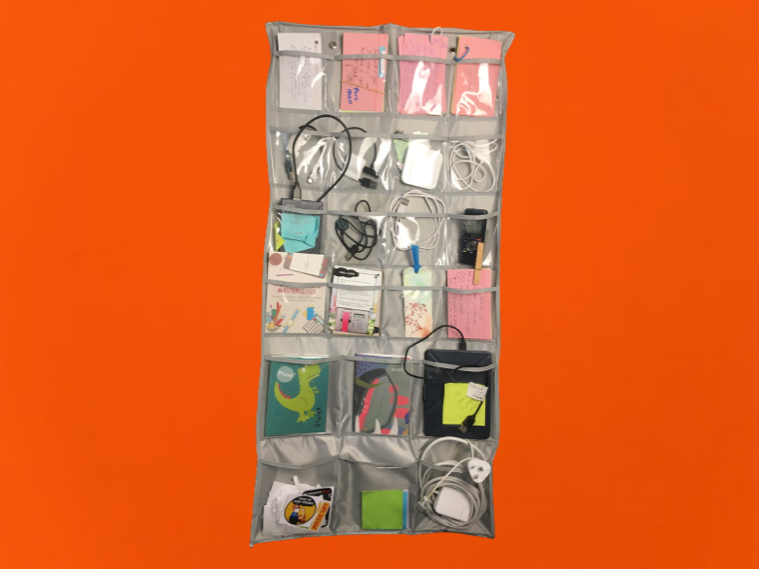
A vertical wall hanger with clear pockets (typically used for storing jewellery) works well for storing and separating these random but important items.
3. Clear away clutter in a box
Feeling stressed in your study space? Perhaps it’s clutter that’s getting you down.
Take a moment to scan your environment. If your eyes land on a pile of objects and you find yourself feeling stressed and/or overwhelmed, take those items and dump them into a box. Now take that box and put it in another room. You can sort through these items later on.
4. Place a jug of water and glass on your desk within arms’ reach.
Staying hydrated is super important when it comes to learning. Research shows even mild dehydration can impact students’ ability to learn and remember information.
But if there’s no water in sight, you’re probably not going to be taking regular sips.
I have a reusable drink bottle but some people find having to unscrew a lid a barrier to taking sips. If that’s you, have a jug of water and a glass nearby. You might also enjoy using a reusable straw (stainless steel or glass).
5. Keep plenty of healthy snacks in the fridge and pantry
Being hungry sucks and it doesn’t serve you when it comes to learning. Your brain needs energy to think and learn. Where does it get that energy from? Food.
Make a start on stocking your fridge and pantry with plenty of healthy snack foods. My favourite snack foods include blueberries, strawberries, and pretty much any fruit, nuts, veggie sticks, and soy yoghurt.

While you’re at it, get rid of any tempting ultra-processed junk food. This junk will mess with your ability to think and learn.
6. Use clear containers, big lists, and post-it notes
If I can’t see my work and items I need, they don’t exist. This is why I always store important items in clear storage containers and write things I need to do on bright yellow paper and colourful post-it notes. If it’s out of sight, it’s out of mind.
One trick I use is leaving myself post-it note reminders of what I need to do next after I complete each work session. These notes give my brain a clear direction of what it needs to focus on next, which means I’m less likely to get derailed.
7. Make all your projects visible with open storage
When there’s a lot of things happening and multiple projects on the go, it’s easy to lose track of what you need to do.
Using open storage systems (e.g., open bookshelves or pigeonhole units) can be another effective way to keep track of all your projects. I use a pigeon hole to organise all my projects. This keeps them in sight and in mind.
8. Have your phone out of sight and out of arms’ reach
I remember an academic coach once saying to me, “If you start the day by checking your email, you’ll be 10% less productive”.
She was spot on.
When you start the day with devices, this puts you in reactive mode. You feel less in control.
Here’s a little psychological trick I use to get myself into proactive mode: I lock my phone in a kSafe for the first 30 minutes of the day. My phone is already placed in the safe before I go to bed, which means all I need to do is spin the dial and press the button when I get up in the morning.

This simple action signals to my brain that I’m in control of my day (and not big tech).
Of course, you don’t need to buy a kSafe to stay off your phone. Placing your phone in a drawer (out of sight) or in another room will also do the job.
9. Noise blocking earmuffs
You use them to mow the lawn, but a pair of earmuffs work wonders for blocking out noise while you’re trying to study.
They also have signalling power. When you put them on, it signals to others (and your brain) that you are in work/study mode. When you take them off, you are free to play, rest, and do whatever you like.
10. Stick up a yearly planner
Having a yearly planner stuck up on your wall can help to create a sense of time awareness. You look up at the planner and you can see in one glance how much time you have between now and when a project is due or when an exam is scheduled.
11. Liven up your space with indoor plants
Indoor plants have been found to boost creativity. But certain types of indoor plants, such as English ivy and the Money plant, also purify the air.
You don’t need to create a jungle to experience the benefits of indoor plants. One or two plants in nice colourful pots is all you need to freshen up your space.
12. Get moving with an active work station
Have you considered working on your feet and incorporating some movement into your study sessions?
Active workstations, such as sit-stand desks, cycle desks, and treadmill desks, help to break the sedentary work cycle, get the blood pumping more efficiently up to your brain, and give you a cognitive boost.
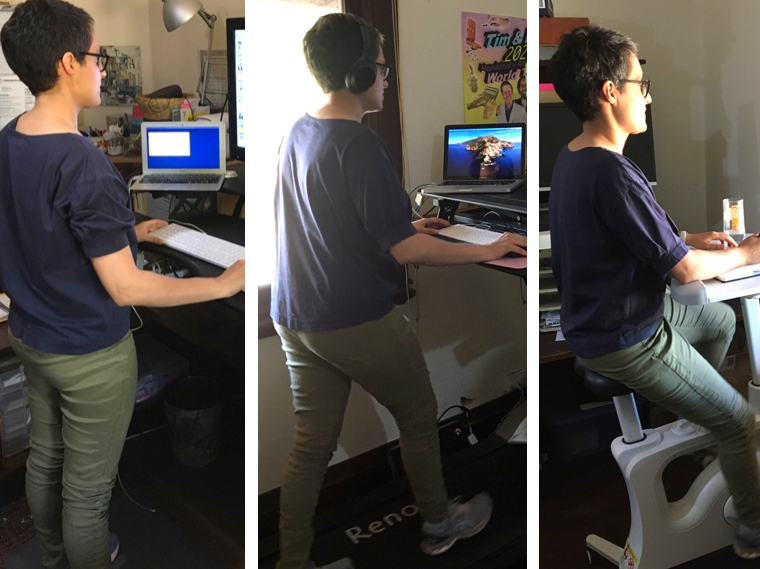
13. Have easily accessible equipment for exercise snacks
If you prefer to stay seated while you study, that’s no problem. Just make sure you get up and move every 25-30 minutes. Take an exercise snack.
An exercise snack is a quick 30-60 second bout of exercise. I have a few small pieces of exercise equipment strategically placed in my study space to mix up my exercise snacks.
Depending on what you like to do and the space you have available, here are a few ideas:
• Kettlebell
• Dumbbells
• Resistance bands
• Skipping rope
• Gymstick
• Hula hoop
14. Surround yourself with a few inspiring pictures and/or quotes
If you feel good in your study space, you’re more likely to want to spend time there. One of the simplest ways to spruce up your space is with colourful and inspiring pictures.
Up on my walls is a colourful world map, a poster from a memorable comedy show I attended with my brother, and a framed piece of children’s artwork.
What do these things all have in common?
They make me feel good. And when I feel good, it’s easier to think, focus, and learn.
15. Roll out a yoga mat
After looking at a screen for 25 minutes or so, get down on a yoga mat and do some gentle stretches. If the mat is already rolled out on the floor, it’s a lot easier to get down and stretch your body.
16. Create a magic spot
This is a designated spot for all your school items (e.g., books, files, reference materials, unit outlines, practice exam papers, and notes). Need to find something to complete a project or study for a test? There’s only one place it can be: in the magic spot.
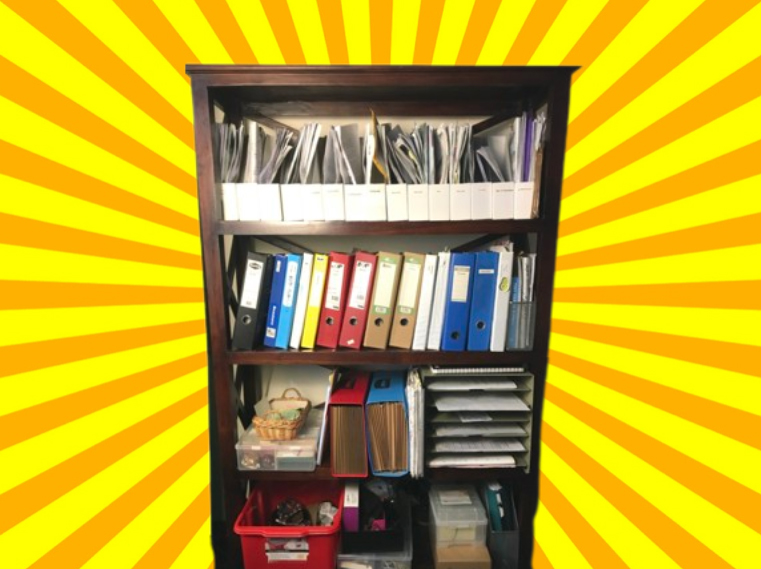
17. Install an Internet block app
When your work gets difficult, it’s too easy to escape to social media, YouTube, and Netflix. To stop yourself mindlessly checking these apps, activate an Internet blocker app such as Cold Turkey or Freedom.
18. Place a notepad and pen within arms’ reach
It’s not just Big Tech companies that can distract us. Often we distract ourselves with all kinds of random thoughts.
How do we handle these thoughts?
You can capture them in a notepad that’s strategically placed within arms’ reach. When a random thought strikes, write it down. You don’t have to act on every thought straight away.
Think of this notepad as your ‘Thought Inbox’. Once you’ve written the thought down, it’s not going anywhere. You can return your focus to the task at hand and deal with these thoughts at a later time.
19. Install an ad blocker plugin
Ads online are like advertising in public spaces: they constitute visual clutter. They also stir up consumptive desires and frequently throw you off course.
You can eliminate a lot of online ads by installing an adblocker plugin. I use Adblock Plus.
20. Set up a whiteboard, markers, and a cloth
When I’m feeling nervous about putting ideas down on paper, I go to my whiteboard. It’s less scary to jot down ideas on a whiteboard.
If it doesn’t work out, that’s okay. You can easily wipe it all away.
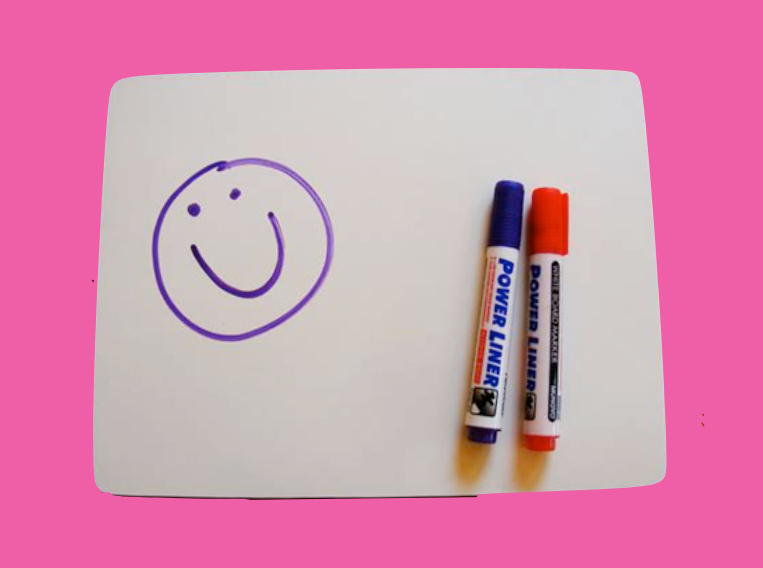
To sum up
Each of these strategies may not seem like much on their own. But when combined, they can have a big impact on your ability to focus, learn, and get things done.
Like anything in life, the key is not to get bogged down by a sense of overwhelm. You don’t need to make all of these changes all at once. Just get started with one or two.
